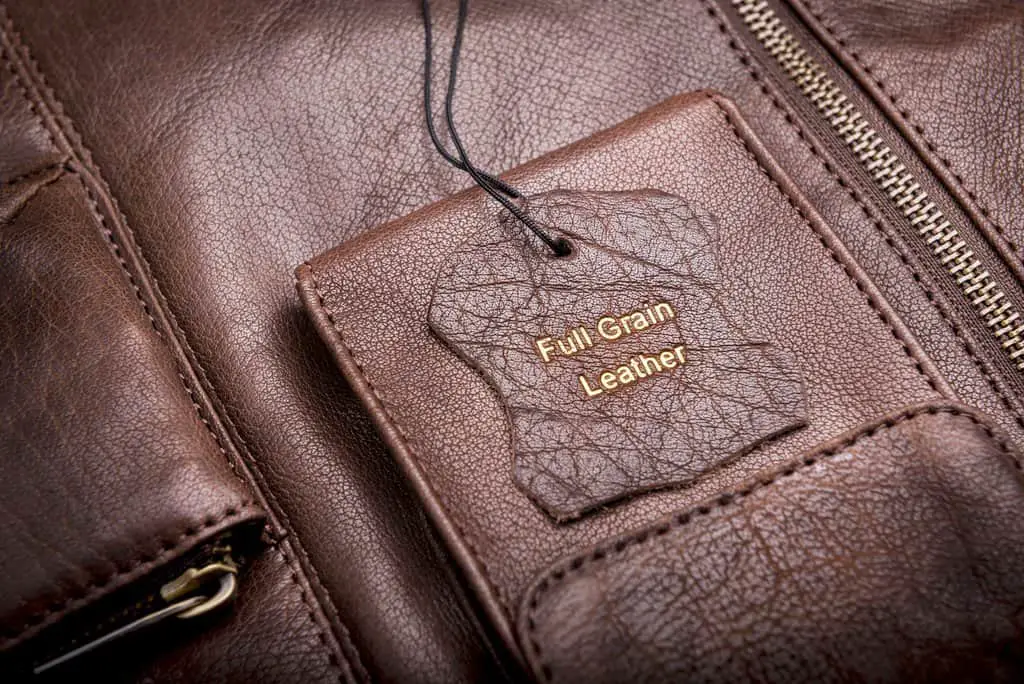It might be daunting at first to learn how to clean and properly take care of full-grain leather goods, but it’s actually pretty easy once you get the basics down. In this article, we’ll walk you through everything you need to know on how to maximize the longevity of your prized leather items and the products you can use.
How to clean grain leather
Real leather– whether it be full-grain or top-grain leather requires careful cleaning because you want to preserve the texture and the overall quality of the item. This means you need to keep in mind to avoid harsh chemicals as much as you can and find the best way to clean them effectively without ruining the leather fibers.
Things you will need:
- Leather cleaner
- Soft-bristled brush
- Microfiber cloth
- Extra soft and dry cloth
- Leather conditioner
Steps:
- Gently remove any loose dirt or dust on the surface of your item using a soft-bristled brush.
- Get your trusted leather cleaning solution and pour a small amount onto a clean microfiber cloth. Remember to read the instruction label on the bottle as well.
- Wipe the entire surface in a circular motion, making sure to include the cracks and crevices where dirt will most likely be stuck.
- Use another clean, dry cloth to wipe the excess cleaning solution once you’re done.
- Let the item dry thoroughly in a well-ventilated room away from direct heat or sunlight.
- Apply some leather conditioner on the entire surface to restore the moisture and suppleness of the leather material.
Best full-grain leather cleaner
If you’re overwhelmed by the choices available online, we recommend using the Chemical Guys Leather Cleaner one of the best leather cleaners on the market. They have a gentle formula that is safe to use on all types of smooth leather finishes such as car seats, furniture, leather boots, bags, and many more. It’s also pH-balanced so you won’t have to worry about damaging the leather fibers while doing some deep cleaning.

Their formula also doesn’t leave any sticky residue while gently removing all types of dirt and stains including grease, body oils, oil stains, and sweat. If you’re someone who hates the smell of chemicals in cleaning solutions, this product is perfect for you. Plus, not only is this cleaner odorless, but it’s also colorless which means it’s safe to use on colorfast leather items.
How to care for full-grain leather
Owning a high-maintenance item such as full-grain leather doesn’t have to be stressful. Taking care of it can be quite fun if you learn to love the process and the payoff is worth every effort you put into it. Here are some tips on how you can care for full-grain leather goods:
- Avoid storing or placing your item directly under sunlight or near artificial heat sources. This can cause fading and leather dryness that will lead to brittleness.
- When cleaning full-grain leather, avoid using an abrasive cloth or hard brushes that can cause scratches on the surface.
- Avoid cleaning full-grain leather often. You only need to do some maintenance once every 6 months.
- Wipe any spills on the leather surface as soon as it makes contact. Use paper towels to absorb the excess moisture.
- Apply a water-resistant wax or spray to protect your item from any liquid damage. There are also leather protectors in the market that features UV protection to prevent sun damage.
- Always apply leather conditioner after cleaning your leather item to make up for the lost moisture during the cleaning process.
Best full-grain leather conditioner
One of the best leather conditioners for full-grain leather is the Bick 4 Leather Conditioner. It can effectively clean and polish full-grain leather while acting as a stain-repellent. What we love about this conditioner is its wax-free formulation which means it won’t clog the leather pores and affect the breathability of your item.
The Bick 4 Leather Conditioner also doesn’t leave any oily residue, unlike other low quality leather products in the market. You won’t have to worry about discoloration too because its formula doesn’t darken leather, so you can safely use this on furniture & upholstery, car interiors, bags, boots, leather jackets, and others.
Conclusion
After everything that we discussed, you’re probably more confident now in cleaning and caring for your full-grain leather goods. It’s important to know the necessary steps and products in order to do it right, but remember that what makes leather great is that it develops its own character over time through its patina. So don’t worry too much about keeping it perfect, as long as you’re taking care of it effectively.
FAQ
Does full-grain leather scratch easily?
What makes full-grain leather such a well-loved material among manufacturers is not just because of its rich appearance, but also because of its durability. The surface can be scratched using sharp objects and these might show, but it’s just cosmetic damage. Full-grain leather is resilient and small scratches won’t affect its functionality.
Does full-grain leather peel?
Full-grain leather doesn’t peel. If you’re confident that your leather sofa or leather bag is made from 100% real leather, then you don’t have to worry about it peeling ever. The only type of leather that peels is faux leather and bonded genuine leather. If it does show signs of peeling, it might be the coating on the surface and not the leather itself.
Can full-grain leather get wet?
It depends on whether it has undergone treatment or not. If you have a raw full-grain leather material, then it isn’t waterproof and you should avoid getting it wet. Most full-grain leather goods you can see in retail stores are already treated with waterproofing sprays or wax to make them water-resistant.
How can you tell if the leather is full grain?
You can tell if the leather material is full-grain if you see that it hasn’t been tanned or sanded down and the imperfections are still visible. You can also tell because of the finish of the leather since it has a high-quality feel to it and is thicker compared to top-grain leather. Since full-grain is the topmost layer of the skin, sometimes you’ll see scars, imperfections, and micro holes.
How long does a full-grain leather sofa last?
If you take care of your full-grain leather sofa properly, you can expect it to last for about 15 to 20 years. Full-grain sofas and other items are very tough and durable therefore, they can survive wear and tear for at least a decade. Compared to faux leather sofas which only last around 5 years before it starts peeling and cracking.
Is full-grain leather durable?
Absolutely. In fact, full-grain leather is considered the strongest and most durable type of leather. The great thing about it is that it will only look richer over time as it slowly develops a patina from being used and handled. There are even handbags and shoes made from full-grain leather that go beyond their expected lifespan and are being sold as vintage classics.
Does full-grain leather crack?
Full-grain leather will not crack. In fact, it’s not prone to cracking, peeling, or tearing at all unless it’s fake. Full-grain leather is made from the most durable material of animal skin because it’s the outermost layer which used to protect the animal in the wild. So you can be at peace knowing that your full-grain leather furniture or clothing will make your money’s worth.
What is the disadvantage of full-grain leather?
The only disadvantage you’ll face when it comes to full-grain leather is that it’s more expensive than other types of leather– both real and faux. This is because the material is harder to work with and will require craftsmen to produce something extraordinary and making it more expensive to produce. Not to mention that this material lasts for a long time making it a great overall investment.
Is it OK to clean leather with vinegar?
Sure, as long as you dilute the white vinegar with equal parts of water. This is effective if you don’t have a leather cleaner on hand and you need to remove a stain immediately. Just remember that vinegar has acidic properties which can dry out the leather fibers or cause some discoloration. Make sure to test it on a hidden spot first and always apply leather conditioner afterward.





